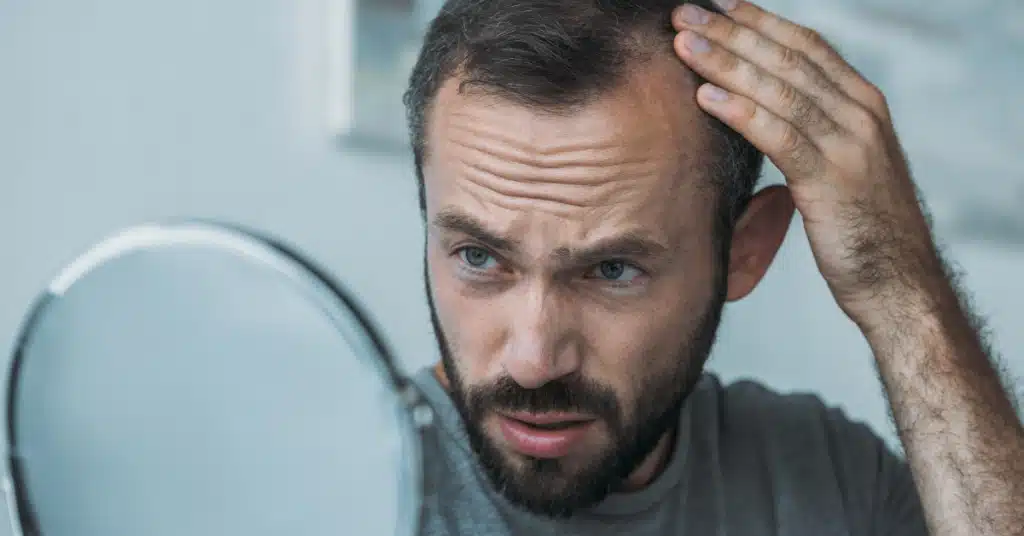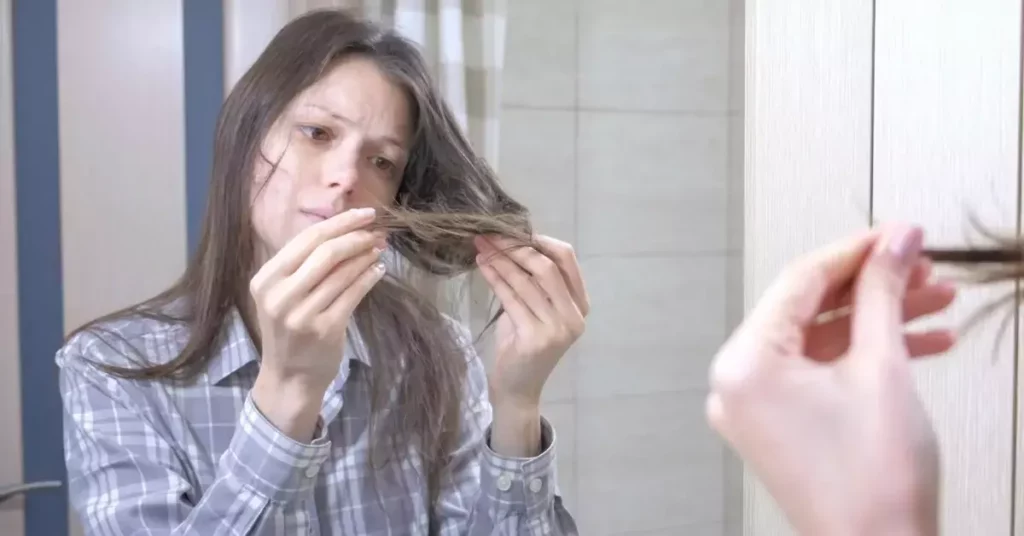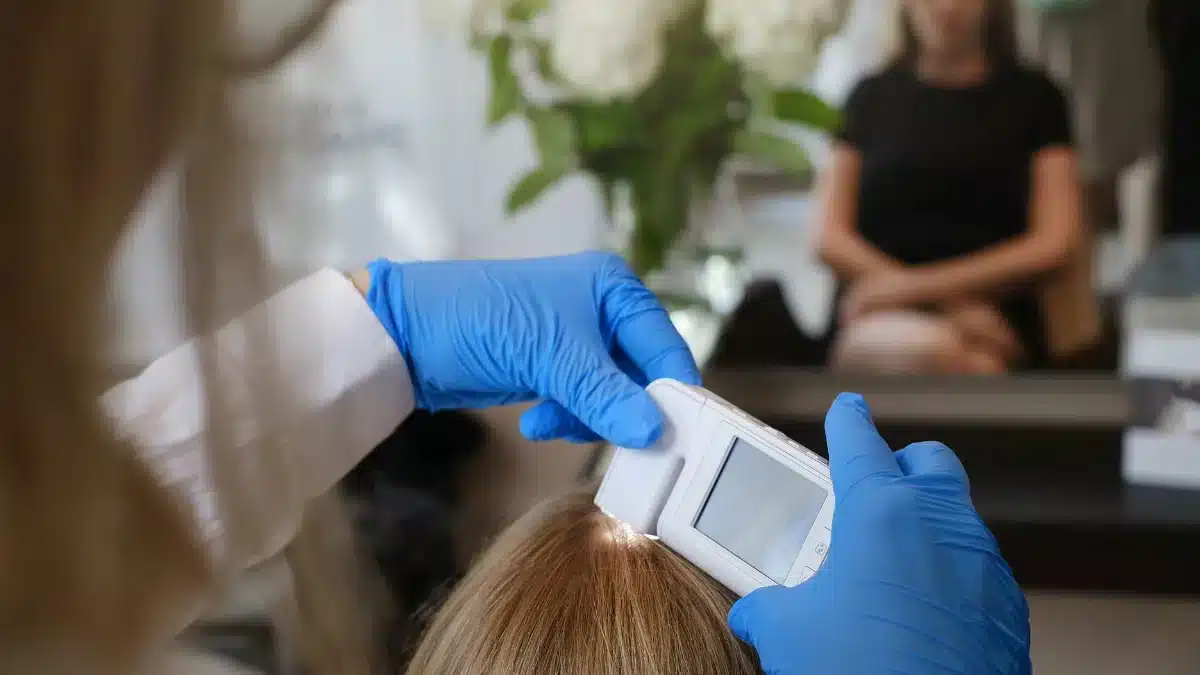Breaking the Fungal Infection Hair Loss Link
Hair loss is one of the most common issues for men and women.
Many factors can cause hair loss.
One of them is infectious agents like Bacteria and Fungi.
These infectious agents attack the hair follicles and weaken them.
Which leads to hair thinning and hair loss.
The Hair Society reports that 35 million men and 21 million women have hair loss.
Continue reading the article to understand more about the fungal infection and hair loss connection.
Can infection cause hair loss
Scalp infections can be caused when infectious agents invade the scalp.
This causes inflammation and pruritis, which leads to the weakening of hair follicles.
Some of the most common infections that cause hair loss include:
Tinea Capitis

Tinea capitis is a fungal infection that affects the hair and scalp.
Tinea capitis can affect people of any age; however, it most usually affects kids between 3 and 14.
It is also known as ringworm or herpes tonsurans infection.
After breaching the hair follicle’s outer root sheath, the fungus invades the hair shaft.
It is common in people that have a weakened immune system.
It can be inflammatory or non-inflammatory.
The non-inflammatory type is not complicated and will not cause permanent hair loss.
However, the inflammatory type causes Kerion, a painful, pus-filled nodule that can cause scarring and permanent hair loss.
It can also happen in the eyelashes and eyebrows.
Symptoms of Tinea capitis include
- Red areas with swelling.
- Dry, scaly eruptions.
- Extreme itching.
- Loss of hair in patches (alopecia).
- A flaking, dandruff-like scalp.
- Minimal fever.
- Lymph nodes with swelling.
Treatment
Treatment of Tinea Captis includes oral antifungal drugs (griseofulvin) and topical antifungal shampoos with Ketoconazole 2%, or products with selenium sulfide or salicylic acid are suggested as adjunctive therapy.
Piedra

Piedra develops when a fungus infects the hair fibers.
Hard nodules growing on hair strands are a noticeable sign of a piedra infection.
Piedra means stone in Spanish, which is similar to hard nodules.
It is also known as Trichomycosis nodularis.
Piedra can happen at any age; however, it usually becomes less frequent around middle age.
The fungal organisms invade the hair cuticles and roots, weakening the hair.
As a result, hair frequently falls out or breaks.
Moreover, certain fungi may survive on the body for extended periods, significantly weakening the immune system.
The infection can happen in the eyelashes, eyebrows, pubic area, beard, underarm, and scalp hairs.
According to the color of the nodules that grow on the hair fiber, there are two varieties of piedra – black and white.
White piedra is caused by Trichosporon beigelii and is primarily found in Europe and the Southern regions of the United States.
Whereas the black piedra is caused by the fungus Piedraia hortae and is typically found in tropical areas.
In most cases, the infection is mild.
But, when the infection is severe, the fungus weakens the hair fiber, allowing it to fall off easily.
This might result in uneven, patched, and diffuse hair loss.
Symptoms of this fungal infection hair loss include:
- Black or white nodules (1 mm in diameter)
- Pain or itching
- Hair that feels gritty
- Brittle, broken hair
Treatments
Shaving off the impacted hair is the fastest method for getting rid of piedra.
Piedra can also be treated with antifungals like terbinafine or Ketoconazole.
Seborrheic dermatitis

Seborrheic dermatitis is primarily a skin disorder, although it can also cause temporary hair loss if it occurs on the scalp or other terminal-haired skin regions.
It causes hair follicle destruction and poor hair growth.
It results in scaly areas, irritated skin, and persistent dandruff.
Seborrheic dermatitis mainly affects the cheeks, sides of the nose, brows, ears, eyelids, and chest, which are oily body parts.
Hair loss is uncommon in seborrheic dermatitis.
If it does develop, it is most commonly caused by scratching and rubbing the scalp, which may be irritating.
Rarely, inflammation may also impact the hair follicles and result in temporary hair loss.
In these circumstances, hair loss is temporary and will ultimately regrow if the person takes action to reduce the swelling.
Symptoms of Seborrheic dermatitis include:
- Scaly and Scratchy scalp
- Burning scalp
- Inflammation
- Thinning hair
Treatment
Treatment involves antifungal creams, oral antifungal medications, corticosteroid creams, and antifungal shampoos that contain Ketoconazole, Pyrithione zinc, and Selenium sulfide to maintain the symptoms.
Buy Nizral shampoo now and get relief.
Takeaway
Scalp infections can cause hair thinning and loss depending on the severity.
Different kinds of infectious agents can cause different types of infections.
Hair loss due to fungal infection is reversible in conditions like Piedra, whereas some infractions might cause permanent hair loss depending on the severity.
Antibiotics, antifungal medications, shampoos, etc., can help treat scalp infections and treat hair loss.
Always visit your doctor to get a proper diagnosis and treatment.
Frequently Asked Questions
WowRx uses only high-quality sources while writing our articles. Please read our content information policy to know more about how we keep our content reliable and trustworthy.






